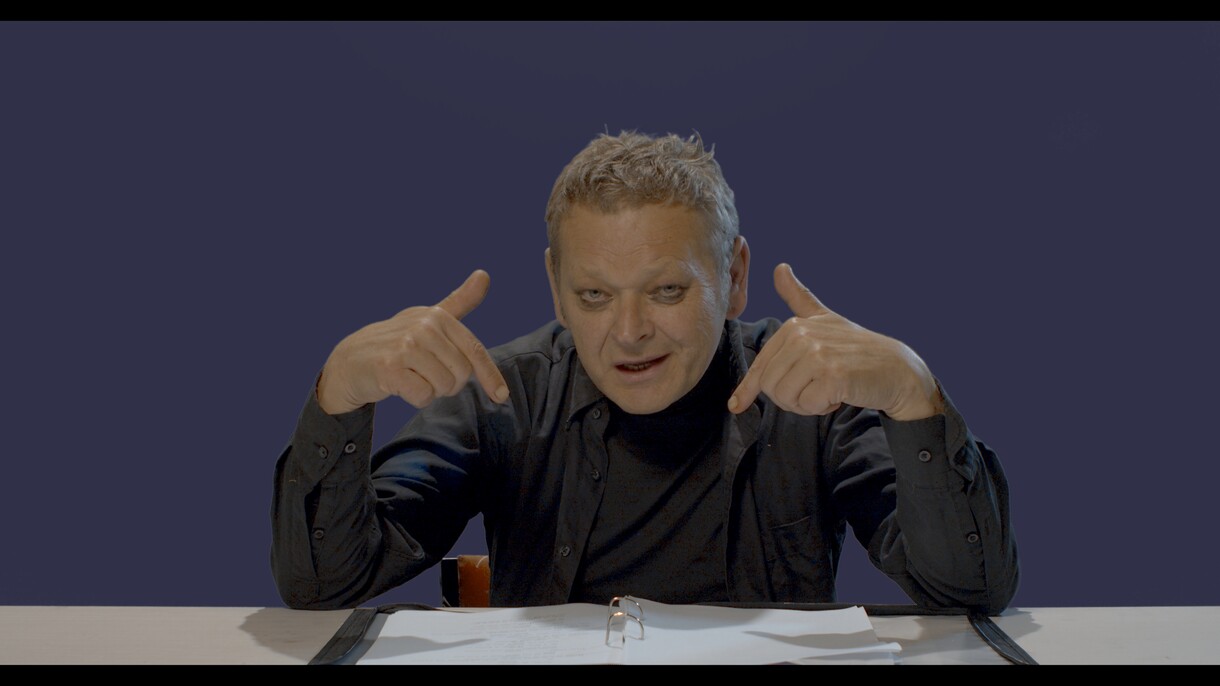Ritornello
Ritornello
John Chrisstoffels, 2018
16mm film transferred to single-channel digital video, sound, duration 2 min 36 sec
Director/Editor: John Chrisstoffels
Camera: Alexandra Porter & John Chrisstoffels
Courtesy of the artist
Inspired by the David Bowie hit ‘The Man Who Sold the World’, Ritornello from John Chrisstoffels seems to embody the increasing claustrophobia of the lockdown experience. A ritornello is a repeated musical phrase and in the alternating camera shots, upstairs inside to downstairs outside, we are presented with an increasingly manic back and forth, a growing sense of unease at being both locked in and shut out. Chrisstoffels has described this work as a homage to filmmaker Maya Deren, De Stijl architect Gerrit Rietveld and philosopher Henri Bergson.
Spheres: An Online Video Project
An online series of moving image works exploring social distance and personal environments including works from Xin Cheng, John Chrisstoffels, Conor Clarke, Ronnie van Hout, Sonya Lacey, Janet Lilo, Sione Monu, James Oram, Nova Paul, Bridget Reweti, Sriwhana Spong, and Matavai Taulangau.
Considering the recent popularity of the word ‘bubble’, the Spheres series examines how we interact, and our emotions, thoughts and sensations in relation to our surroundings. German philosopher Peter Sloterdijk described societal structure spatially, as spheres expanding from intimate bubbles to globes and foams. These works offer different perspectives on social distance, personal environments and the close radius of home.
We invited artists to share something of their spheres, the ideas and places they live with and around. Their works touch on a variety of concerns, from environmental issues to consumerism and the importance of preserving cultural knowledge. Experienced online, they also reflect on representation and the contemporary circulation of imagery and information, the transfer to digital that allows us to reach out into the world.
Related reading: Covid-19
Exhibition
Spheres: An Online Video Project
April – October 2020
An online series of moving image works exploring social distance and personal environments including works from Xin Cheng, John Chrisstoffels, Conor Clarke, Ronnie van Hout, Sonya Lacey, Janet Lilo, Sione Monu, James Oram, Nova Paul, Bridget Reweti, Sriwhana Spong and Matavai Taulangau.
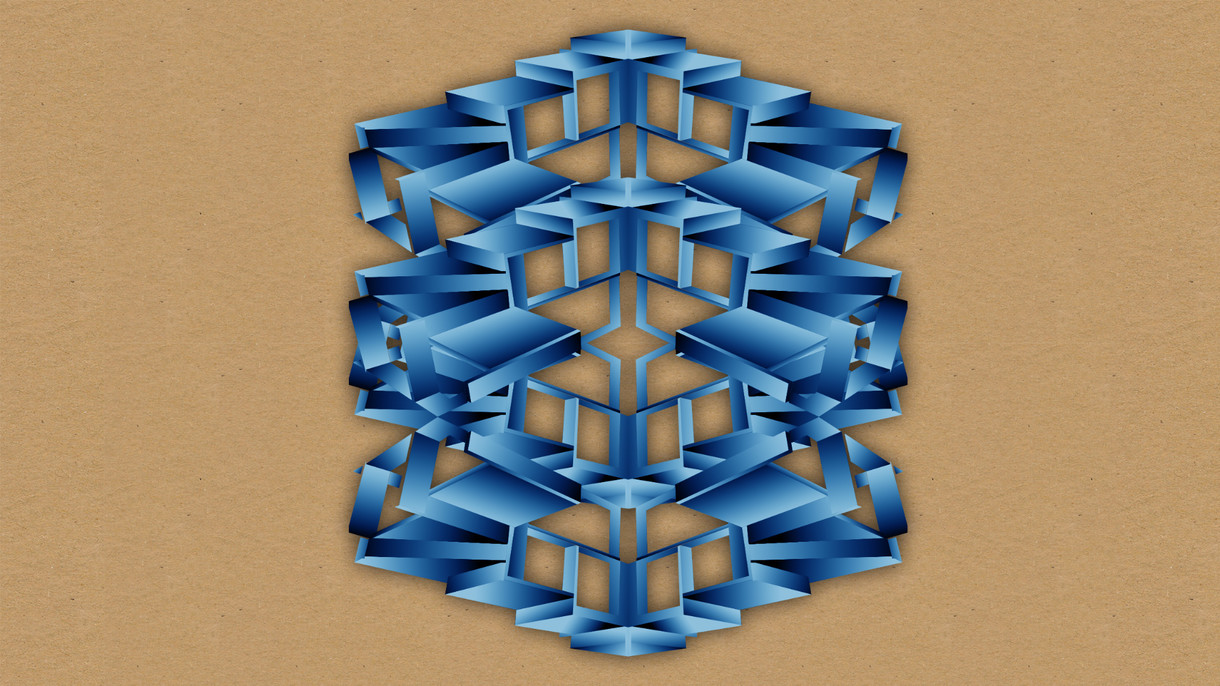
I love being in a crisis with you
Janet Lilo and Courtney Sina Meredith, 2020
Single-channel HD digital video, colour, sound, duration 9 min 23 sec
Courtesy of the artists
Contains adult language.
Artist Janet Lilo (Ngāpuhi, Sāmoan & Niuean) and writer Courtney Sina Meredith (Sāmoan, Mangaian) are constantly creating, and Aotearoa’s lockdown period proved no different.
Their new work is a talanoa between lovers, created from the results of a daily exchange riffing between the visual and the literal, interchanging weekly to work in the other's natural medium.
Over a month of bubble seclusion, released from the pressures of daily life, they develop an appreciation of working differently – not knowing the shortcuts, the tropes, the rules. What we are treated to is an intimate portrait of two people in the process of building a life together, while the world around them crumbles.
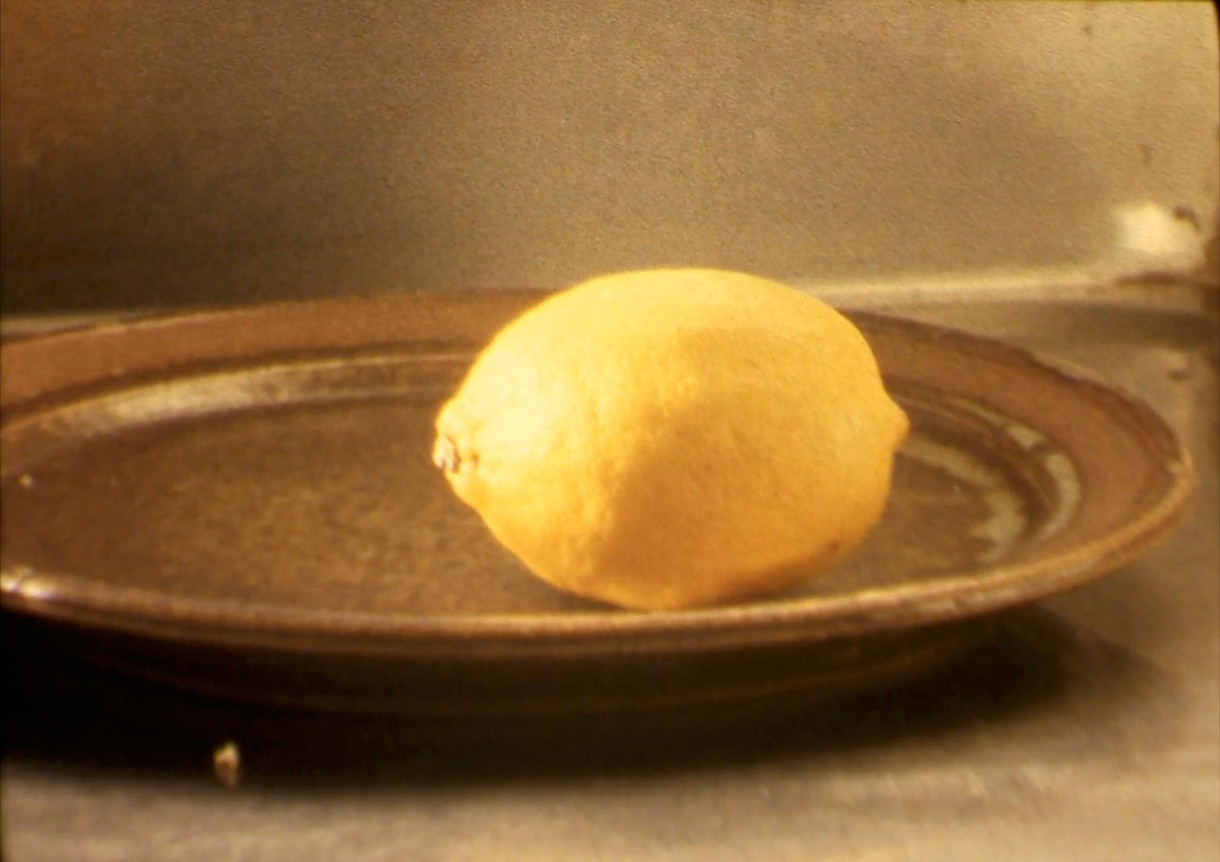
Still Light
Nova Paul, 2015
16mm film transferred to digital video, colour, sound, duration 6 min 35 sec
Courtesy the artist
Originally commissioned by CIRCUIT Artist Film and Video Aotearoa.
Commissioned as a response to an untitled poem from the collection Like Love Poems by artist Joanna Margaret Paul, Nova Paul’s Still Light is a beautiful reflection on the domestic and intimate. Shot in 16mm film, the camera traces around objects and watches light shift across the surfaces, creating fluctuations in colour and flickering shadow. A fittingly tender soundtrack is provided by Nova's friend and sometime collaborator Bic Runga.
The room is close with mystery
this morning
heavy green folds of velvet curtain
are patterned with light
the sky breaks in panes of almost blue
& casts a white mirage upon the
ceiling
mirror filled with things
the white dove-cote outhouse
received from another window
with its dark apertures
a mound of sunlit ivy
a light blue room
caught, held in the
round lid of some vessel
open on the dressing table.
Or so the room seems to be
heavy & punctuated with mystery
in the early stillness & I would
drift out & put on the room, the day
a close & heavy garment
for my pregnancy,
but the obdurate shape by my side
prevents my peaceful
mingling with the folded curtain & the light
the mirror the window the pale day…
Extract from an untitled poem, published in Joanna Margaret Paul, Like Love Poems: Selected Poems (edited by Bernadette Hall, Victoria University Press, 2006, pp.30–31).

Mangēre Bridge
Sione Monu, 2020
Single-channel HD digital video, colour, sound, duration 3 min 55 sec
Courtesy of the artist
Sione Monu is usually based in Canberra, Australia but after a round trip to Tonga, as part of a Christchurch Art Gallery / Creative New Zealand funded project due to have opened on 1 April 2020, he is staying with family in Māngere, Auckland. Producing short, sharp and witty works in video, Monu’s practice has the immediacy and energy of French New Wave cinema comprising every aspect that cellphone media can provide.
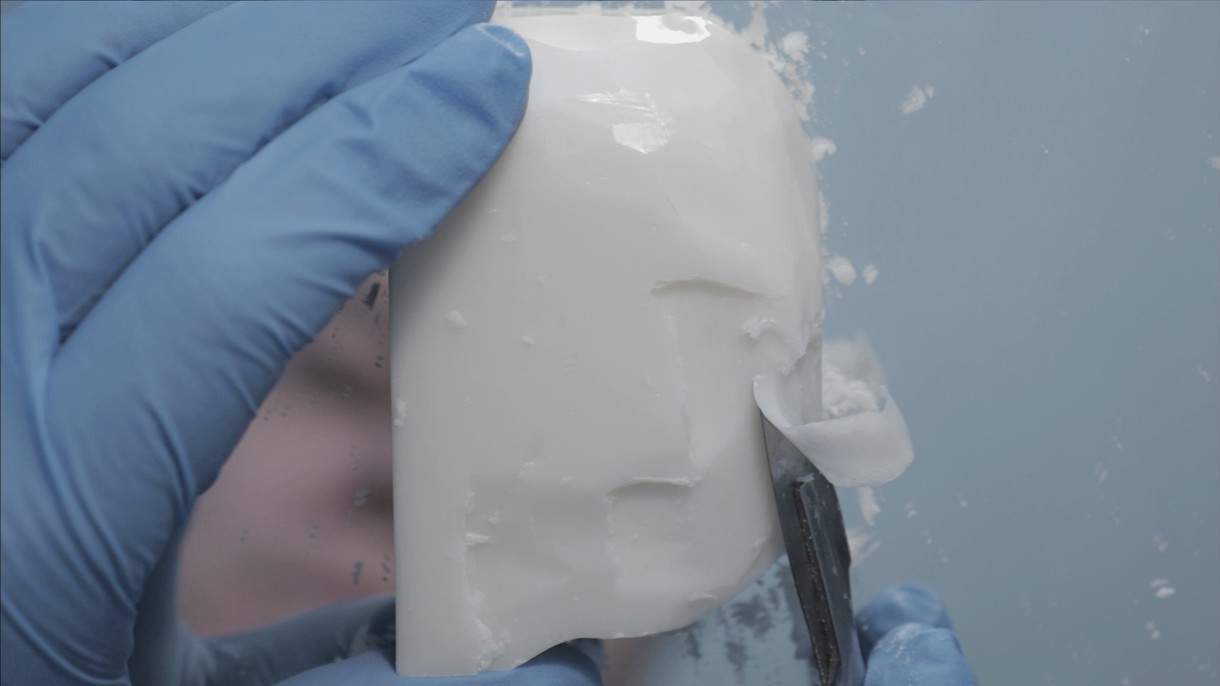
Simulacrum
James Oram, 2020
Single-channel HD digital video, colour, sound, duration 22 min
Courtesy of the artist
Artist James Oram produces works that embrace the elegance of raw materials from which to draw out honest observations of modern living. This work is located within the tradition of the uninterrupted single take, no edits, preferring video as a direct document of an action over a constructed narrative.
Employing blue latex gloves and surgical tools, Oram carves a face from a square block of soap resting on a mirror to construct a clean, idealised version of himself. The work is reminiscent of lives configured for the best possible presence online, or of how we now protect ourselves when attending to daily banalities such as trips to the supermarket during lockdown. Either way our interface with the world has been transformed, what will the new you be like when we re-emerge in real life?!

Reservoir Romanticism
Conor Clarke, 2020
Single-channel HD digital video, colour, sound, duration 1 min 28 sec
Courtesy of the artist and Two Rooms, with thanks to Krzysztof Wysocki and University of Canterbury Campus Security
For some years, artist Conor Clark (Ngāi Tahu) has been exploring the sleight of hand potential of photography. More recently she has experimented with video, bringing her photographic tendencies with her to draw out the sensuousness of moving image. Perceptions of nature and our relationships to water are also consistent themes for Clarke.
Shot on her cellphone, Reservoir Romanticism documents a range of water sources Clarke discovered within a one kilometre radius from her home. It is an experiential map of sorts, and an ode to hard-working waters.
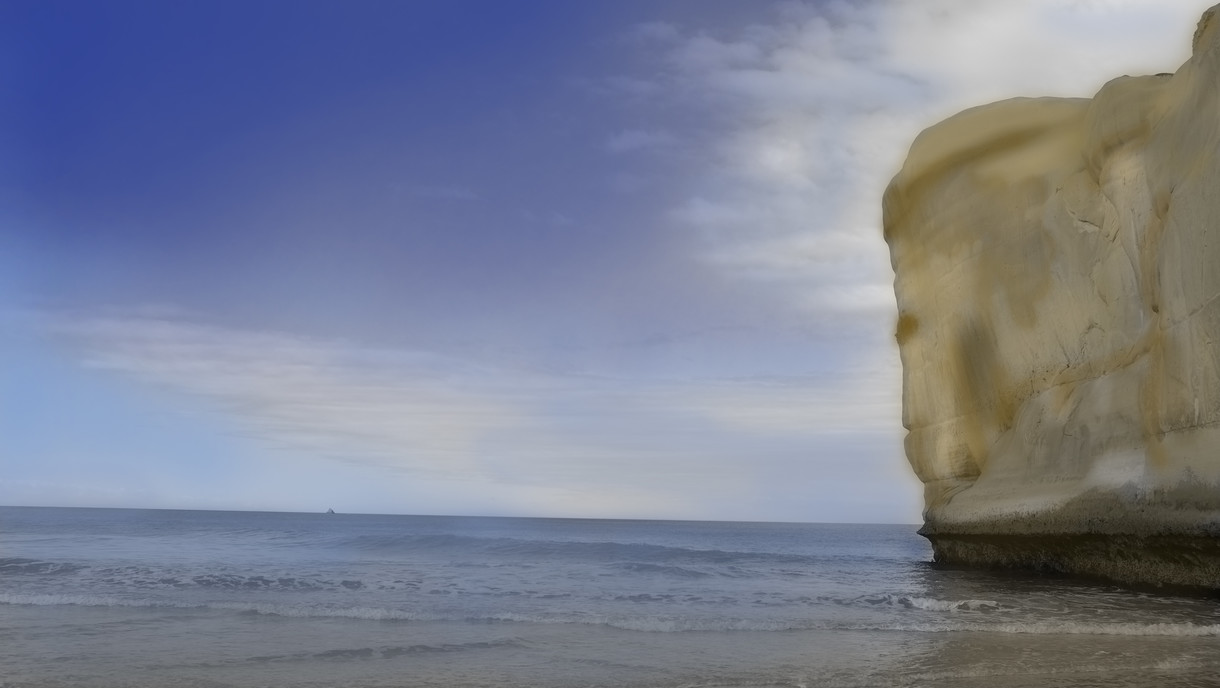
Tunnel Beach
Bridget Reweti, 2020
Single-channel HD digital video, re-coloured photographs, sound, duration 50 sec
Thanks to Flogging a Dead One Horse Town for their song 'Dork Tomahawk'
Bridget Reweti (Ngāti Ranginui, Ngāi Te Rangi) often draws from her everyday experiences of being in a place and reflections on the history it contains, layering these ways of thinking about a site. Here, Reweti re-coloured black and white photographs taken on her state sanctioned walks to Tunnel Beach, the nearest to her new home in Ōtepoti. An old-fashioned technique, hand-tinting of photographs was common in the nineteenth century, and her use of this method reflects an ongoing interest in the history of photography, its role in documenting colonial life and landscapes as well as the agency Māori have within photography.
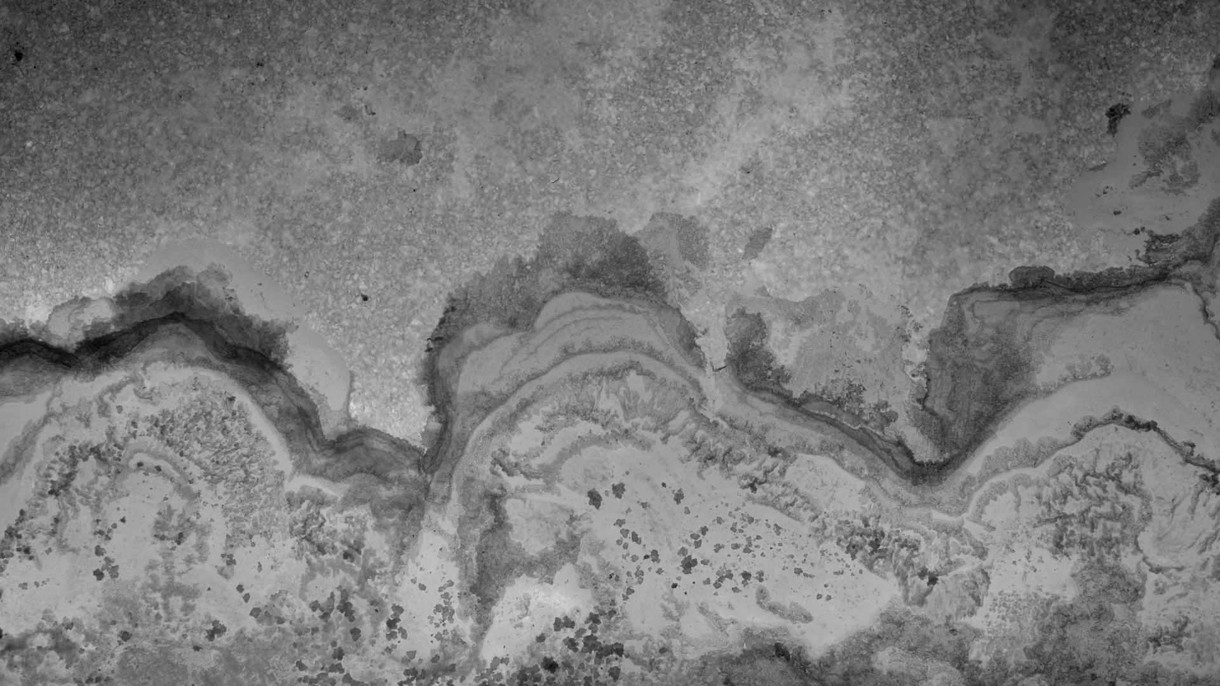
By Sea
Sonya Lacey, 2015
Single-channel HD digital video, sound, duration 9min 7 sec
Courtesy of the artist and Robert Heald Gallery
Originally commissioned by CIRCUIT Artist Film and Video Aotearoa
Camerawork by Campbell Farquhar and Sonya Lacey
Narration by Fuyuko Akiyoshi
Music by Johnny Chang: folk music background (excerpt)
By Sea is a carefully constructed narrative on the merging of language and architecture, a literal unfolding of what it might mean to live inside a letter. It tells the story of a fictional seaside apartment building, part of a complex that forms the words Par Mer, written in a bold, italic typeface. Most filming takes place inside an architectural model intricately built out of cast salt. Originally commissioned as a response to the poetry of Joanna Margaret Paul.
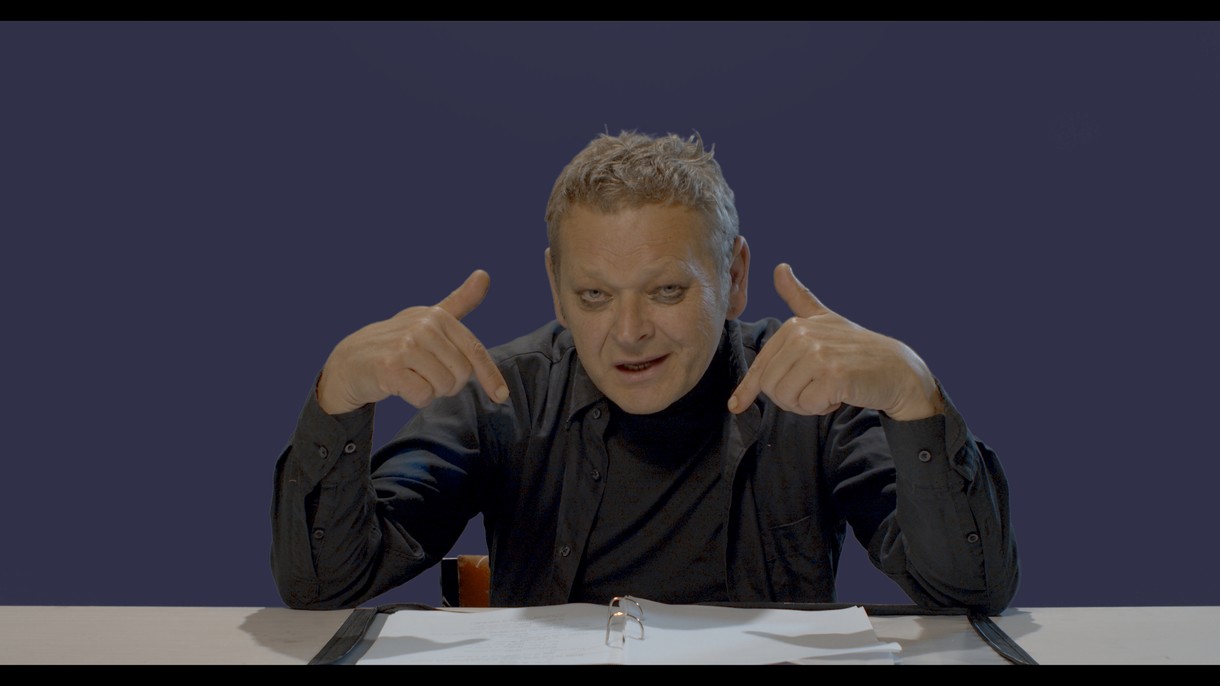
Ghosting (The Breakfast Club)
Ronnie Van Hout, 2020
Single-channel HD digital video, colour, sound, duration 12 min 25 sec
Courtesy of the artist and Ivan Anthony
A quintessential film of the 1980s,The Breakfast Club is based on five stereotypical high school students – a brain, an athlete, a basket case, a princess and a criminal – stuck together on Saturday detention in the library. This remake or ‘ghosting’, in which Ronnie van Hout plays all five characters, emphasises the awkwardness of our teenage years and offers some Brechtian comic relief on the idea of the social distancing that has become part of our everyday lives.
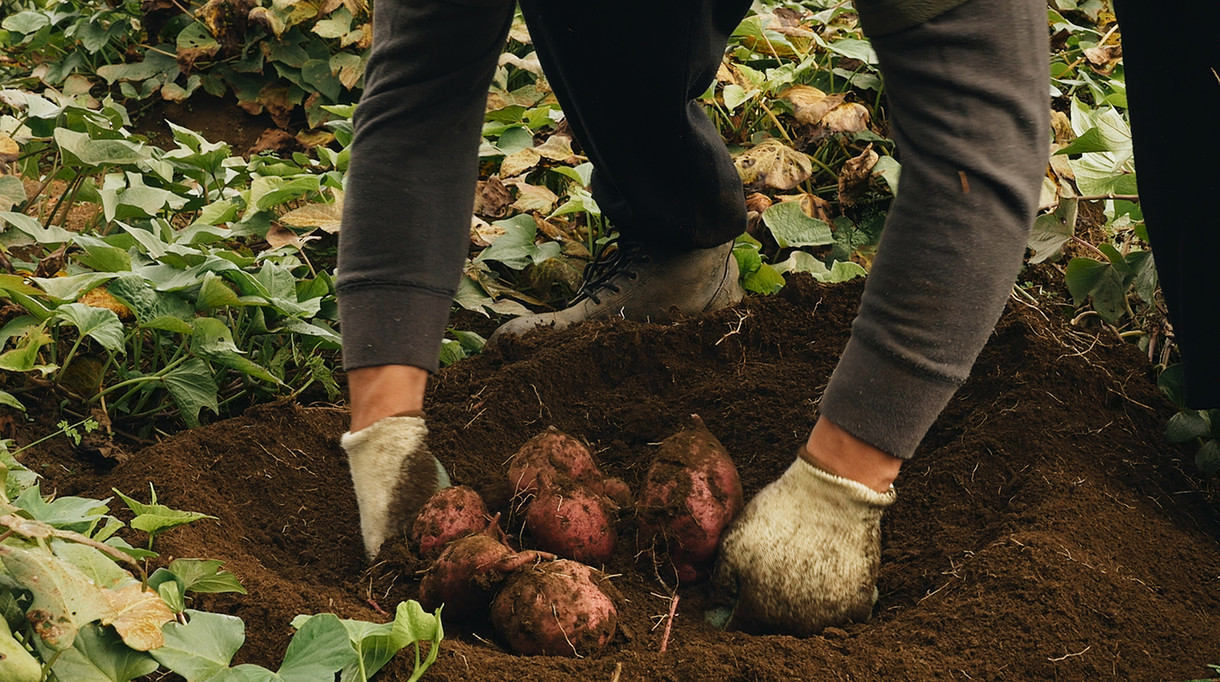
Maʻu Pe Kai’
Matavai Taulangau, 2019
Online edit, two-channel HD digital video shown as single-channel, colour, sound, duration 4 min 41 sec
Courtesy of the artist
With thanks to the Tongan Community in Kaikohe and Okaihau
In this work Matavai Taulangau captures the harvesting of kumala, showing the connections of labour and cultural knowledge. Originally shown at Enjoy Contemporary Art Space, the two-channel version of ‘Maʻu Pe Kai’ (2019) documented three kumala harvests: one by the Tongan community in Okaihau in Northland, one by the artist’s mother in nearby Kaikohe, and one by the artist in Tāmaki Makaurau Auckland. This newly edited version for online viewing offers us a glimpse into the hard work of harvest and the relationships forged through shared labour and food.
Read a response to the work from Salome Tanuvasa here: http://enjoy.org.nz/blog/2020/04/new-landscapes-salome-tanuvasa-reflects-on-matavai
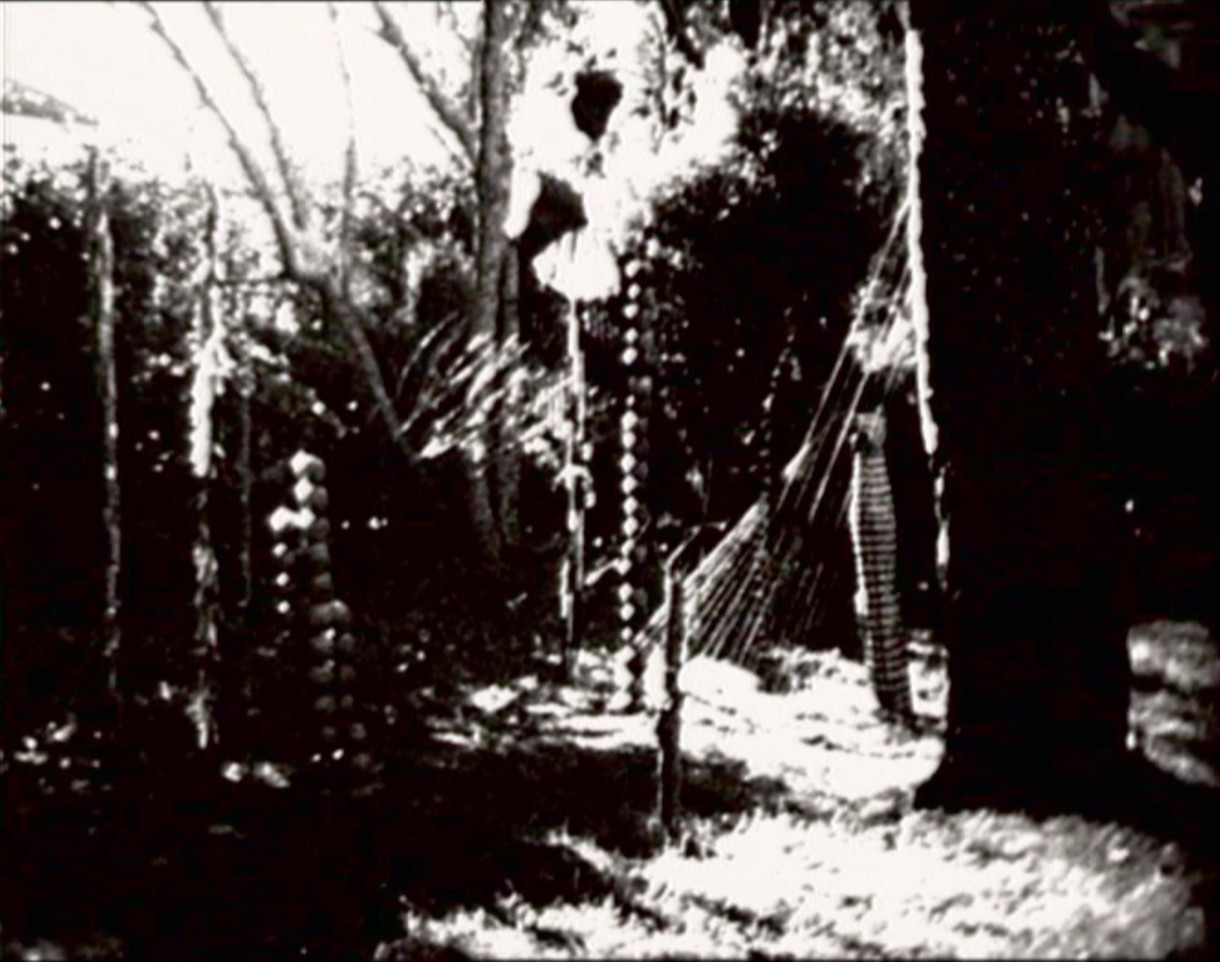
24 hr Garden
Sriwhana Spong, 2006
Super 8 film transferred to single-channel digital video, black and white, silent, 2 min 52 sec.
Courtesy of the artist and Michael Lett
There is an avant garde tradition of embracing the nature of film's inherent material qualities. This methodology keeps every aspect of the material in place, every element remains intrinsic to the work. Here, we see an entire roll of Super 8 film exposed by hand across a 24 hour period.
Filmed in her parent’s garden, Sriwhana Spong condensed time through stop-motion photography in order to capture light falling across a group of shrine-like objects made using souvenirs from Bali and assemblages of fruit and everyday items. As the sun moves across the sky, we observe the accelerated passing of time in the small enclave.
Spong often incorporates timed musical sequences across the duration of her exhibitions, grounded in a cyclic Indonesian musical tradition. For us, her work will appear and disappear like a gong, chiming at month-long intervals from May through September.
On 28 April – 28 May
Off 29 May – 27 June
On 28 June – 28 July
Off 29 July – 27 August
On 28 August – 28 September
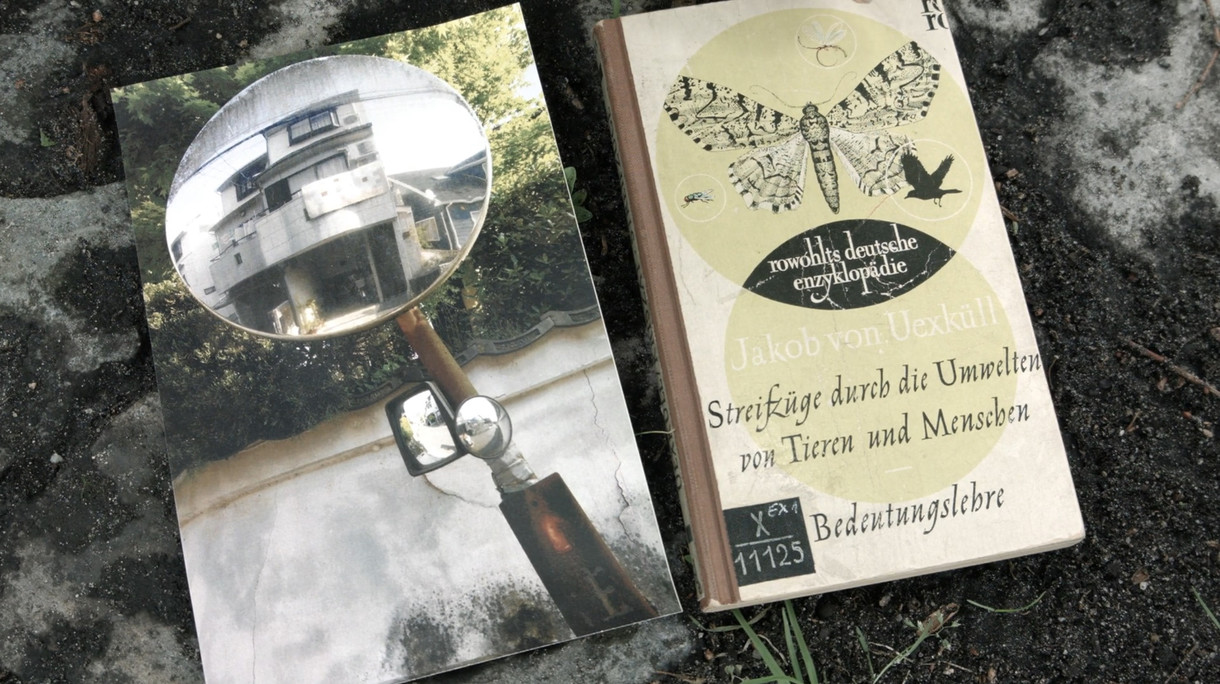
Seeing Like A Forest
Xin Cheng, 2019
Single-channel HD digital video, colour, sound, duration 34 min 31 sec.
Camera: Jesús Pulpón
Calligraphy: Wigger Bierma
Courtesy of the artist
With thanks to Creative New Zealand
Everyday resourcefulness is central to the work of Xin Cheng. Her recent film Seeing Like A Forest was made in Hamburg. While living in the city for three years, she reflected on over a decade of research observing the small modifications to shared spaces made by non-specialists, around the Asia-Pacific and Europe. Walking, talking, doing and making, Cheng learns from close looking; in this work she shows some of the approaches people take to adapting their communal environments, examples of inventive resourcefulness and heartwarming waste minimisation.
Notes
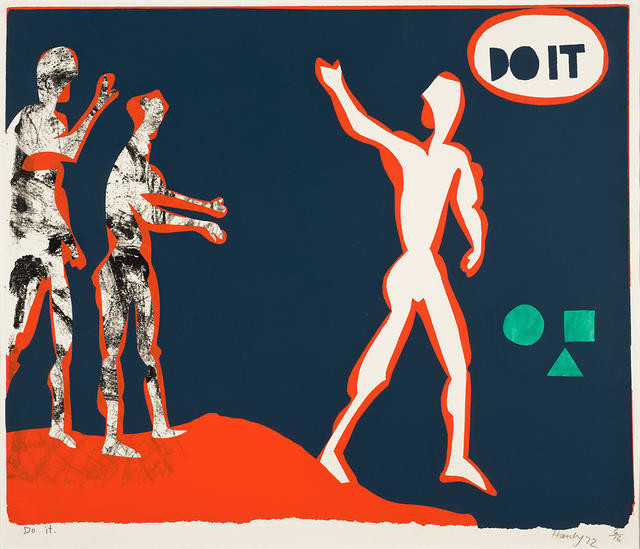
Director’s Update
With a welcome shift back to Level 2 in our collective fight against COVID-19, we are delighted to reopen our doors to visitors.
Notes
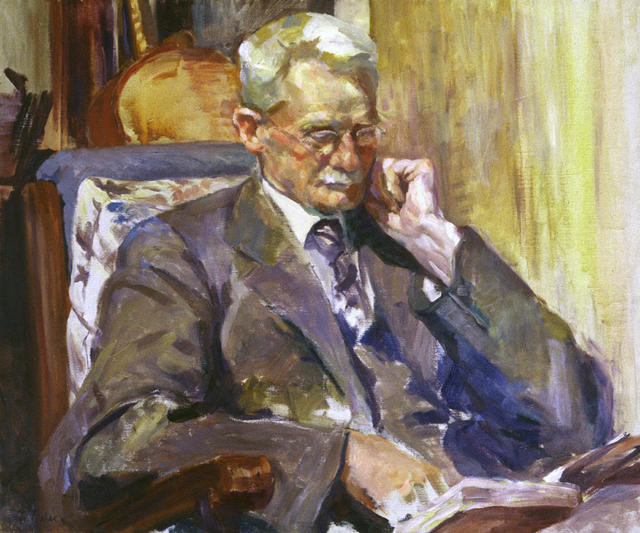
Bringing up the rear
We finish our handwashing poems with R A K Mason's Song of Allegiance, read, as was the Keats sonnet that started this series, by me.
Notes
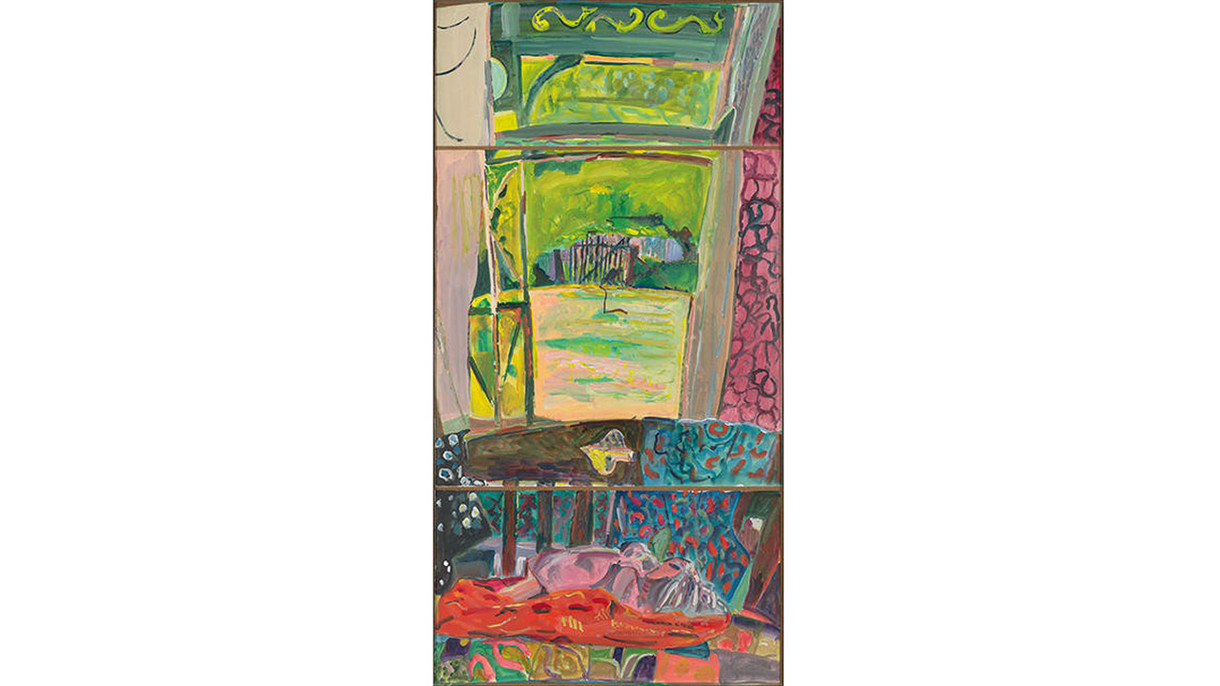
House Rules by Joanna Margaret Paul
We are delighted to present Joanna Margaret Paul's House Rules, read by its creator's daughter Magdalena Harris. Dishwasher tension will, we are sure, be familiar to all.
The poet also created the painting you see, which is called Barrys Bay: Interior with Bed and Doll.
And although it's a day after Mother's Day, let's today salute all mothers and their efforts, especially over the last few weeks.
Notes
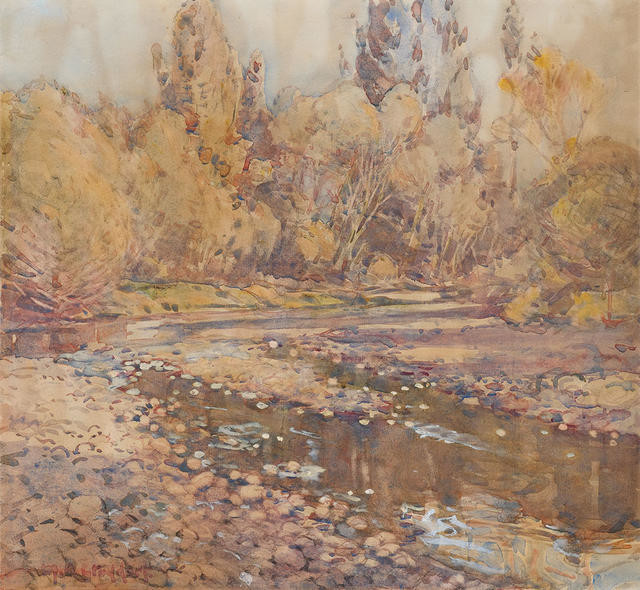
Running Water by Robyn Hyde
We don't want the poems to stop but dare we hope we are inching closer to re-opening? In the interests of playing it safe, let's keep washing our hands though, today with Visitor Host Dora Mullins and some exquisitely sad lines from Robin Hyde.
Notes
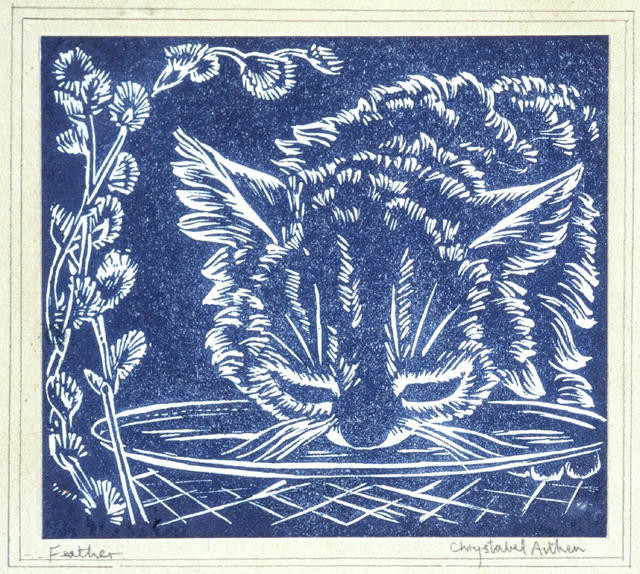
Cat in the Dark by Margaret Mahy
A beautiful poem today by Margaret Mahy, beautifully read by 10 year old Elsie Billington.
A minute of pure handwashing pleasure.
Notes

A Calm Day by Basil Dowling
Today our Graphic Designer Peter Bray reads about the sound of the ocean when the wind dies down. Only Basil Dowling puts it lot better than that in A Calm Day.
Notes
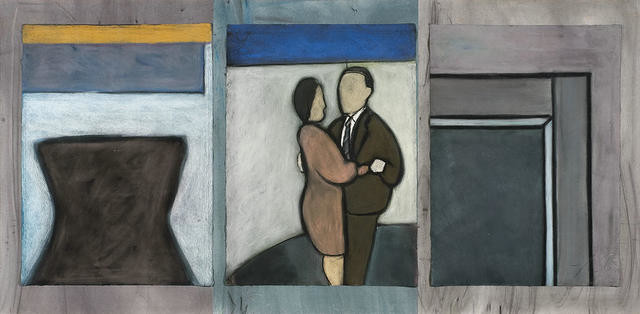
I saw her face by Robin Judkins
We've had lots of poetry responding to nature but poetry's other great theme has been absent. We put that right today with a love poem by Robin Judkins. A simple expression of love you might say, but listen right to the end and then say with confidence what happens next.
That will take a minute so your hands will be sparkling. Today's reader is Visitor Host Tim Hobbs.
Notes
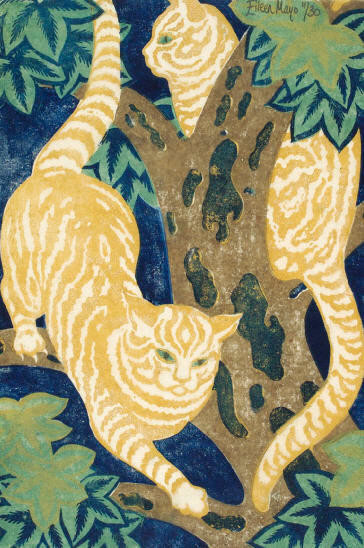
And the animals shall inherit the earth
It’s been interesting observing how nature has quietly but very quickly reclaimed the earth since we have all gone into Covid-19 lockdown. My social media timelines have been peppered with images of animals wandering where humans can’t, boars roaming in Barcelona, peacocks in Dubai, deer in Japan and schools of tiny fish in the now clear waters of Venice to name a few. Related of course are the clearing skies around the world.
Notes
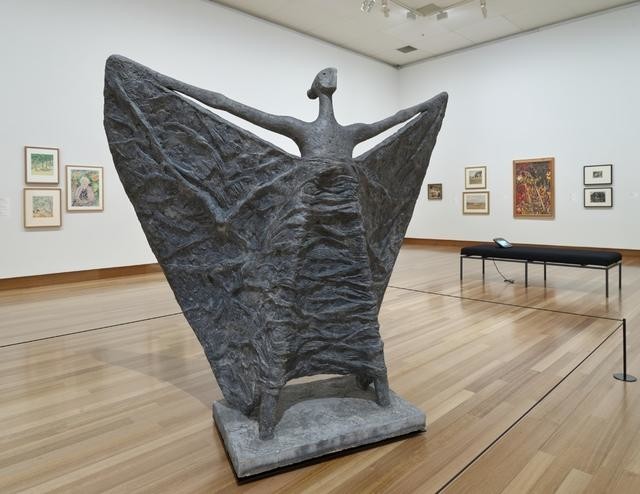
To a child dancing in the wind by W B Yeats
Today our Business Administrator Jackie Heavey reads a poem by a compatriot of hers, William Butler Yeats, in which the innocence of childhood is envied.
Yes you can now go to the beach, but keep your distance and, of course, keep washing those hands.
Notes

Spheres: An Online Video Project
Over the past few weeks, I have been working with fellow curator Nathan Pohio on an online video project that we’ve called Spheres. I’ve only recently joined the Gallery, so it’s been helpful to have something to focus on from home as well as a reason to be in touch with some interesting artists.
